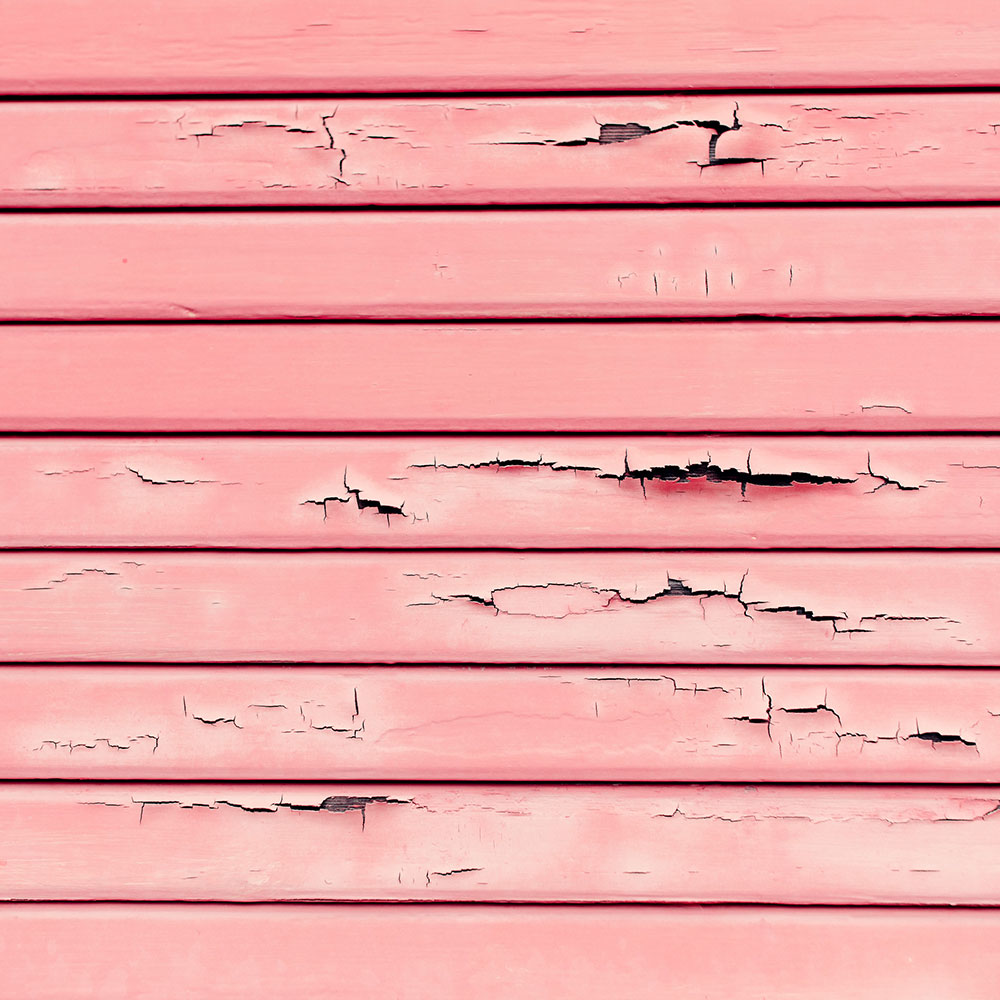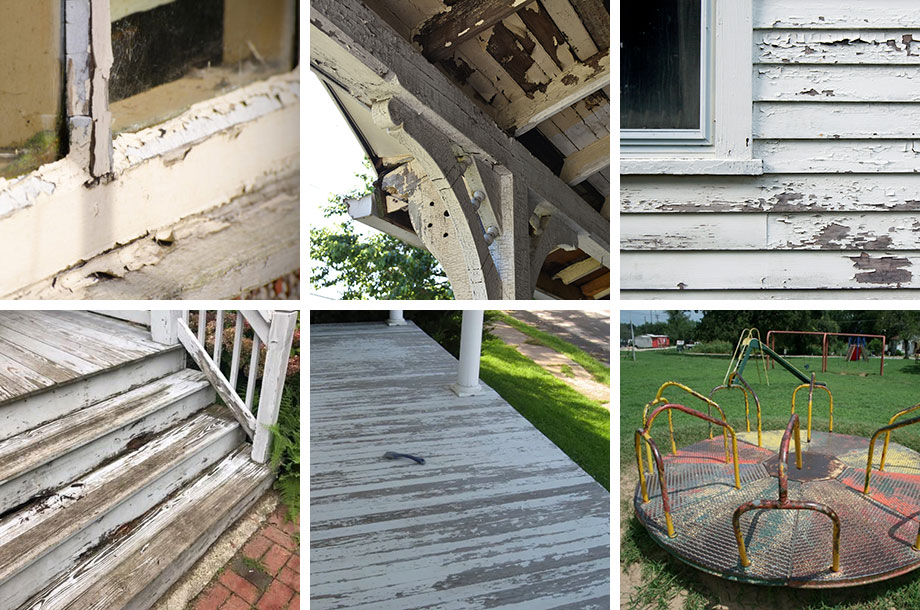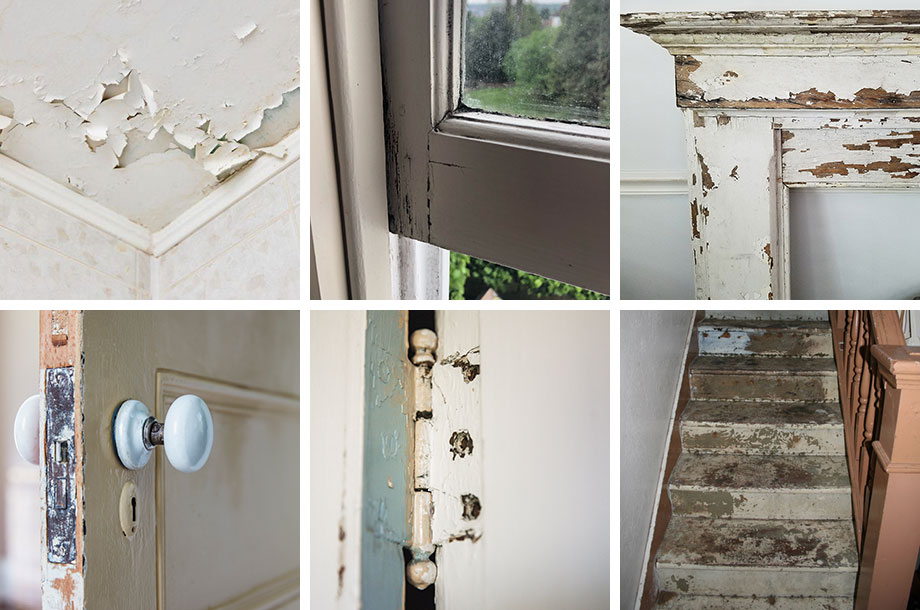
Found naturally in the earth’s crust, lead is a soft, highly malleable, blue-gray metal. It is a poor conductor of electricity and highly resistant to corrosion. These unique properties made it a desirable material dating back to 5000 BC, when ancient humans used it to make pipes, dishes, cosmetics, coins and bullets.
During this same time, artists and laborers discovered that mixing lead into their paint improved the paint’s thickness, density and opacity. This not only increased the paint’s durability, but also sped up the drying process. Further, they discovered that products painted with lead-based paint maintained a fresh appearance for a longer period of time and resisted moisture that caused corrosion.
The benefits ancient people discovered about lead-based paint also made it ideal for modern humans. For thousands of years, people used lead paint in homes, on metal exposed to the elements and even children’s toys.
But wait, isn’t it dangerous?!
Yes! Lead poisoning is the presence of too much lead in the body. It causes nervous system damage, seizures, behavioral problems, learning disabilities, stunted growth, kidney damage and delayed development. It also causes reproductive problems, including a decrease in sperm concentration in men. Lead is a likely carcinogen and high levels of exposure can be lethal.
According to the World Health Organization (WHO) and the US Center for Disease Control (CDC), there is no known safe level of lead in the body. Repeated studies demonstrate that even very low exposure levels impact children’s school performance and intellectual capacity. Further, low exposure levels in adults contribute to hypertension, heart disease and stroke.
How does lead get into my body?
Workers get lead in their bodies by breathing in lead dust, especially during renovations that disturb painted surfaces. They can then unknowingly carry the dust home from the workplace and expose their families.
Children, however, are at the greatest risk. Children get most of their exposure from normal hand to mouth activity in environments with lead contaminated dust and soil. Further, lead acetate has a sweet taste (as sweet as white sugar!), which encourages children to put products painted with lead paint in their mouths, including toys. (Children may even lick or chew on painted walls and trim.) A pregnant mother can also pass lead poisoning to her unborn child.
So lead paint must be banned, huh?
Yes, lead was banned from household paints in the US in 1978. However, that means that houses built prior to 1978 likely still harbor materials painted with lead paint.
What parts of my home might contain lead?
On the exterior, possible hazards include:
- Painted wood surfaces, including siding, trim, columns, soffits, windows and doors.
- Painted stairs, porch floors and rails.
- Old playground equipment.
- Peeling paint. If paint chips fall into the soil, they can poison the ground and anything grown in it.
- Paint stripping and removal. When stripping the paint on the exterior of a house, the dust (if not properly contained) can travel up to 400 feet away, exposing not only you and your family, but your neighbors as well.
- Renovation work. Any activity that disturbs surfaces painted with lead paint can create lead dust.

On the interior, possible hazards include:
- Painted wood surfaces, including doors, windows, trim and cabinetry.
- Painted stair treads, risers, railings and banisters.
- Walls and ceilings of kitchens and bathrooms.
- Old painted double-hung windows. As they slide up and down, double-hung windows scrape against the jamb, releasing lead dust.
- Renovation work. Any activity that disturbs surfaces painted with lead paint can create lead dust.
- Painted furniture, toys and toy jewelry

I’m planning a home remodel. Am I required to test for lead?
It depends on who does the work.
If you are self-performing your remodel (not hiring a general contractor) on your own home that you do not intend to rent, you do not need to test. Although it is highly recommended that you do.
However, if you hire a general contractor for your project and your house was built prior to 1978, the contractor MUST follow the rules of the Renovation, Repair and Painting Rule (RRP) issued by the US Environmental Protection Agency (EPA).
Effective April 22, 2010, the rule requires that all licensed contractors conducting renovation, repair and painting projects on pre-1978 homes and child-occupied facilities (child care and schools) be trained and certified to follow lead-safe work practices. This includes testing and all work to safely contain the job site if lead is present. It also includes training to work with and remove materials containing lead. This requirement is not just for demolition contractors – it is for EVERY contractor who disturbs painted surfaces in pre-1978 homes.
In Oregon, contractors must apply to the Oregon CCB for a Lead-Based Paint Renovation (LBPR) license. As a homeowner, you can check CCB to confirm that your contractor has a LBPR license.
Can I test for lead myself?
Yes. Home test kits are available, but may not always be accurate. A home test kit will only tell you if lead is present on a surface; it cannot tell you how much or if it is a hazard. Further, it cannot tell you how to remediate it. If you want to conduct the test yourself, the EPA recommends using an EPA-Recognized Lead Test Kit and following all directions to achieve accurate results.
On second thought, I’d like to hire a professional to test.
Good idea! A licensed lead inspector has training and more advanced testing equipment than any DIY-er. But remember, if you hire a general contractor for your remodel, they will take care of all lead testing for you.
Oh no! The test was positive. What happens now?
If you are doing your own renovation project, you can remove it yourself, but you must comply with all Oregon Department of Environmental Quality (DEQ) regulations for lead disposal. If you’re going to DIY, the US Department of Housing and Urban Development (HUD) publishes a guide for lead paint safety and home maintenance. The EPA also publishes a Lead-Safe Renovations for DIYers guide.
If you’ve hired a general contractor for your project they will remove and dispose of the hazardous material for you.
Please note, sometimes surfaces painted with lead paint do not require removal. Like asbestos, if it will not be disturbed you can paint over it. But it is important to properly maintain the new finish so that the old surface stays covered and no chips flake off.
What’s next?
Old homes are full of charm, but the materials used to construct them can pose remodeling challenges, such as dealing with lead and asbestos. Partnering with a reputable architect and contractor means you don’t have to navigate these issues on your own. Contact us to discuss your next project. Together with our network of resources we can tackle any remodeling surprises.
